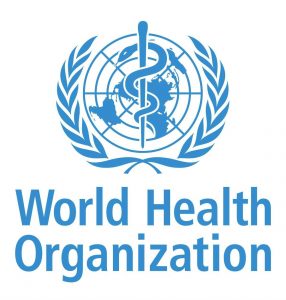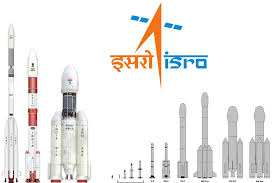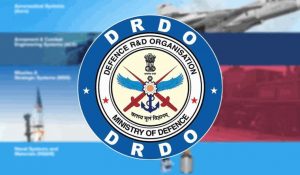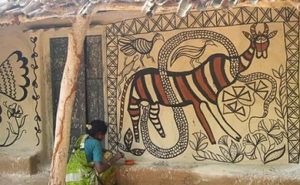Today’s Current Affairs: 28th July 2025 for UPSC IAS exams, State PSC exams, SSC CGL, State SSC, RRB, Railways, Banking Exam & IBPS, etc
Table of Contents
Global Specs 2030 Initiative:

The World Health Organisation (WHO) has launched a global initiative called ‘Global Specs 2030’.
- It aims to ensure that everyone has access to affordable eyecare services by 2030.
- The SPECS 2030 initiative spearheads the actions needed for success, focusing on five key areas:
- Services: Improving access to refractive services
- Personnel: Building capacity of eye care personnel
- Education: Promoting public awareness about eye health
- Cost: Reducing the cost of eyeglasses and services
- Surveillance: Strengthening data collection and research
- The initiative will focus on 4 key strategies of engagement to support countries and stakeholders.
- Normative work builds on WHO’s existing technical guidance for eye care and developing additional resources
- Global SPECS Network provides a platform for relevant organizations to promote collective and coordinated advocacy and action, share experiences, and expand their professional network.
- It will be convened with relevant private sector actors, including for example the optical, pharmaceutical and technology industries, private sector service providers and insurance companies.
- Engagement of regions and countries, including a range of activities, will accelerate progress and bridge the gap between global eye care commitments and country implementation.
Chamaegastrodia reiekensis:

Scientists from Mizoram University and Manipur University recently discovered a new and extremely rare orchid species Chamaegastrodia reiekensis — in the forests of Northeast India.
- Chamaegastrodia reiekensis is a new species of orchid.
- It is named after its type locality, Reiek, a scenic mountain destination in Mizoram known for its rich biodiversity.
- Belonging to the elusive genus Chamaegastrodia, this orchid is holomycotrophic—entirely lacking chlorophyll and leaves—and derives its nutrients exclusively from underground fungi.
- Incapable of photosynthesis, it relies wholly on symbiotic fungal associations for survival.
- With this addition, the global count of Chamaegastrodia species rises to eight.
- These mysterious orchids are sparsely distributed across parts of the Eastern Himalayas, South-Central China, Japan, Korea, Myanmar, Nepal, and Thailand.
- Notably, all Indian representatives of this genus have been recorded exclusively in Northeast India.
- reiekensis was found in moist, humus-rich soil near bamboo clumps at an elevation of 1,500 metres.
- Reiek forest where the orchid was located features a multi-layered canopy with tall emergent trees and dense understorey vegetation, offering niches for numerous unique plant species.
- With temperatures ranging between 20–28°C and annual rainfall between 200–250 cm, the forest supports tropical vegetation year-round.
- Flowering occurs from August to September, and fruiting from September to October.
- It has been provisionally listed as Critically Endangered (CR) under IUCN criteria.
- Its small size and camouflaged coloration make it extremely difficult to detect on the forest floor.
- The plant emerges only briefly during its flowering and fruiting periods — posing a major challenge for researchers.
Environmental flow:

The Union Jal Shakti Minister led a comprehensive meeting focused on the environmental flow (e-flow) of the Ganga River and its tributaries.
- Environmental flow refers to the quantity, timing, and quality of water flow required to sustain freshwater ecosystems and the livelihoods that depend on them.
- Problems in Indian Rivers e-Flow:
- In recent decades, extensive interventions in river flow—such as the construction of dams and barrages, pollution, and encroachments—have severely impacted the ecological balance of rivers.
- To address these issues, the concept of “Environmental Flow” has been introduced, emphasizing the need to maintain a minimum water flow to ensure the health of river ecosystems.
- Significance of Environmental flow
- It is critical for maintaining the ecological integrity of rivers and their estuaries.
- E-flow also ensures significant benefits for human welfare, especially in areas where water use is highly competitive and regulated.
- E-Flow studies consider the habitat and flow requirements of key fish species to ensure the survival of aquatic life and balanced river flow.
- This contributes to long-term ecological and economic benefits for society.
Scheme for Promotion of Culture of Science:

The Union Minister for Culture and Tourism informed Rajya Sabha about the Scheme for Promotion of Culture of Science.
- It is a flagship initiative of the Ministry of Culture, Government of India.
- It is aimed at fostering scientific temper and awareness across the country for the public in general and students in particular.
- The scheme supports the establishment of Science Cities, Science Centres, Innovation Hubs and Digital Planetariums in various regions.
- The National Council of Science Museums (NCSM), an autonomous body under the Ministry of Culture, serves as the nodal agency for implementation of the scheme.
- Under this Scheme Science Centres/Digital Planetariums (Category-III) are set up in areas with a population of less than 5 lakhs.
- As of July 2025, a total of 27 Science Centres have been established across the country under the Scheme for Promotion of Culture of Science (SPoCS) of the Ministry of Culture.
- These institutions have significantly contributed to enhancing scientific awareness and informal science education through hands-on exhibits, innovation hubs, digital planetariums, and outreach programmes.
Indian Regional Navigation Satellite System:

ISRO will launch three navigation satellites for its Indian Regional Navigation Satellite System (IRNSS) by 2026.
- It is India’s independent regional navigation satellite system also known as NavIC (Navigation with Indian Constellation).
- It is developed in India by the Indian Space Research Organisation (ISRO).
- IRNSS envisages the establishment of a regional navigational satellite system using a combination of geosynchronous orbit (GEO) and geostationary orbit (GSO) spacecraft and state-of-the-art ground systems.
- IRNSS-NavIC is designed to provide accurate position information service to users in India and the region extending up to 1500 km from its boundary.
- IRNSS-NavIC network: NavIC is designed with a constellation of seven satellites and a network of ground stations operating around the clock.
- Three satellites are placed in GSO.
- Four satellites are placed in inclined GEO.
- IRNSS provides two types of services, namely:
- Standard Positioning Service(SPS) – that is provided to all users.
- Restricted Service(RS) – an encrypted service provided only to authorised users.
- The signals of the other global navigation satellite systems (GNSS), including GPS, GLONASS, Galileo, and BeiDou provide interoperability with those of the NavIC SPS signals.
Unmanned Aerial Vehicle Launched Precision Guided Missile-V3:

Defence Research & Development Organisation (DRDO) has successfully carried out flight-trials of Unmanned Aerial Vehicle Launched Precision Guided Missile (ULPGM)-V3 at the National Open Area Range (NOAR) test range in Kurnool, Andhra Pradesh.
- It is a precision-guided air-to-surface missile launched from drones and designed to strike targets with high accuracy while reducing risk to personnel.
- The missile is jointly developed by DRDO in collaboration with Bharat Dynamics Limited (BDL), Adani, and multiple MSMEs and start-ups under the Make in India initiative
- Features of Unmanned Aerial Vehicle Launched Precision Guided Missile-V3
- It can achieve a maximum range of 4 km during the day and 2.5 km at night.
- The ULPGM-V3 is equipped with a high definition dual-channel seeker that can strike a wide variety of targets.
- It can be fired in plain and high-altitude areas. It has day-and-night capability and two-way data link to support post-launch target/aim-point update.
- The missile is equipped with three modular warhead options: Anti-armour to destroy modern age armoured vehicles equipped with Rolled Homogeneous Armour (RHA) with Explosive Reactive Armour (ERA); Penetration-cum-Blast warhead with Anti Bunker application and Pre-fragmentation warhead with a high lethality zone.
- There are three known ULPGM variants: ULPGM V1 (baseline), ULPGM V2 (production variant, also known as ULPGM), and ULPGM V3 (extended-range variant, also referred to as ULM-ER).
- The ULPGM-V3 can be carried and operated by individual soldiers in remote and mountainous regions.
- The drone-launched missile also comes with a tandem warhead to defeat tanks equipped with explosive reactive armor (ERA).
United Nations-designated International Year of Cooperatives (IYC) 2025:

To mark the United Nations-designated International Year of Cooperatives (IYC) 2025, India unveiled the National Cooperation Policy 2025 to transform the cooperative sector into a people-driven economic force.
- It supports the Ministry of Cooperation’s mandate of “Sahakar se Samriddhi” by aiming to strengthen cooperatives and expand their grassroots reach.
- The policy replaces the National Policy on Cooperatives in 2002 and sets the course for cooperative growth over the next two decades (2025–2045).
- The policy aims to leverage existing government schemes such as the Dairy Infrastructure Development Fund (DIDF), PM Matsya Sampada Yojana (PMMSY), and the National Programme for Dairy Development (NPDD) to establish 2 lakh new multipurpose Primary Agricultural Credit Societies (M-PACS) within five years.
- The policy aims to empower rural populations by making cooperatives more inclusive, focusing on Dalits, Adivasis, women, and youth, while strengthening their role in the wider economy.
- The policy pushes cooperatives to expand into over 25 sectors like dairy, fisheries, and foodgrain procurement.
- The policy promotes cooperative education via Tribhuvan Sahkari University, India’s first national cooperative university.
- The policy aims to modernise cooperatives to stay competitive in a fast-changing, tech-driven world.
- The policy sets up National Cooperative Exports Limited (NCEL) to help cooperatives access global markets, focusing on exports like rice and wheat.
2nd edition of Kala Utsav 2025:

Artists from Jharkhand, Odisha, and West Bengal participated in the 2nd edition of Kala Utsav 2025 – ‘Artists in Residence Programme’ at Rashtrapati Bhavan, showcasing traditional paintings like Sohrai Khovar, Pattachitra, and Patua.
- The program honors India’s living art traditions while offering a platform for folk, tribal, and traditional artists to showcase their work
Sohrai Painting:
- It is a traditional indigenous art form practiced by women from various tribal communities in the Hazaribagh region of Jharkhand, including the Kurmi, Santhal, Munda, Oraon, Agaria, and Ghatwal groups. Known as harvest art, it is deeply linked to agriculture and cattle domestication. The term ‘Soh’ or ‘Soro’ means to drive away, and ‘Rai’ refers to a stick. As part of the ritual, mandalas or aripan are drawn with rice gruel to welcome cattle into homes, a task performed by village women using their fingers. Sohrai Khovar Painting has received the Geographical Indication (GI) tag in the year 2020.
Patta Chitra:
- Originating in Odisha, it is closely associated with the Jagannath Temple in Puri, where it is traditionally used to decorate the sanctum sanctorum.
- Pattachitra, painted on cloth (Pata) coated with chalk powder and tamarind seed glue, uses natural colors from vegetable, earth, and mineral sources.
- Themes include religious, mythological, and folk stories, notably Krishna Leela and Lord Jagannath.
- Without pencils or charcoal, artists start with borders and sketch directly with light red and yellow brushes, finishing with a lacquer coating for shine and water resistance.
Patua Painting:
- It is a folk art tradition from West Bengal, practiced by the Patua or Chitrakar community (both Hindu and Muslim).
- Patua artisan community is also found in Bihar, Jharkhand, Odisha, and parts of Bangladesh.
- It is painted on cloth scrolls called pati or patta, backed with old sari fabric, using bamboo-goat hair brushes and vegetable dyes fixed with gum.
- It is used to narrate Mangal Katha, especially by Hindu Patuas in Kalighat and Kumartuli.
ISRO Chief Dr. V Narayanan Honoured with GP Birla Memorial Award:
Dr. V. Narayanan, the current Chairman of the Indian Space Research Organisation (ISRO) and Secretary of the Department of Space, was recently awarded the prestigious GP Birla Memorial Award in 2025. This accolade recognizes his outstanding contribution to India’s space programme and his leadership in advancing cutting-edge space technologies. The award is one of India’s notable scientific honors, acknowledging individuals who have made profound impacts in the fields of science, education, and culture.The GP Birla Memorial Award, formerly known as the Lifetime Achievement Award, commemorates Ghanshyamdas (GP) Birla, a visionary industrialist and philanthropist. It is conferred by the GP Birla Archaeological Astronomical and Scientific Institute, chaired by Nirmala Birla. The award celebrates contributions to science, education, astronomy, and public service, and has been given to eminent national and international figures.
India’s First Hydrogen-Powered Train Coach Successfully Tested:
India has entered a new era of green transportation with the successful testing of its first hydrogen-powered train coach at the Integral Coach Factory (ICF), Chennai, on July 25, 2025. This breakthrough marks a critical step toward sustainable mobility in railways and places India among a handful of countries adopting hydrogen-based rail technology. The initiative is part of a broader push to meet India’s net-zero emissions targets and modernize its railway infrastructure with clean energy alternatives. India began exploring hydrogen-based rail technology under its “Hydrogen for Heritage” initiative in 2023. The Railway Ministry proposed retrofitting DEMUs (Diesel Electric Multiple Units) and developing new hydrogen-powered trains to support clean transport in heritage and hill routes.
Geetanjali Shree Wins PEN Translates Award for ‘Once Elephants Lived Here’:
Renowned Hindi author Geetanjali Shree, celebrated for her International Booker Prize-winning novel Tomb of Sand, has once again captured global literary attention. Her latest work, Once Elephants Lived Here, translated into English by Daisy Rockwell, has been awarded the PEN Translates Award 2025 by English PEN, a UK-based human rights and literary organization. This achievement is not only a personal milestone for the author but also a proud moment for Indian literature, especially for works in regional languages.The PEN Translates Award, instituted by English PEN, aims to support the translation of outstanding works of literature into English, making global voices more accessible. The award promotes diversity by supporting translations from a wide range of languages and regions. For the 2025 edition, 14 books in 13 languages from 11 regions were selected.
Riley Powell Defeats Pankaj Advani at IBSF World 6-Red Snooker Championship 2025:
16-year-old Welsh cueist Riley Powell defeated India’s snooker legend Pankaj Advani in the final held in Manama, Bahrain. The closely contested match ended 5-4 in Powell’s favour, denying Advani a record 29th world title on his 40th birthday. The win marks a significant milestone in Powell’s budding career and highlights the global rise of young talent in the sport of snooker.The International Billiards and Snooker Federation (IBSF) World 6-Red Championship is a prestigious global event featuring top cueists from around the world. The “6-Red” format, unlike traditional snooker, features just six red balls instead of fifteen, leading to a faster, more aggressive style of play. Pankaj Advani, India’s most decorated cueist, entered the tournament as a wildcard and was expected to clinch his 29th world title.
Prof Uma Kanjilal Appointed as First Woman Vice-Chancellor of IGNOU:
Prof Uma Kanjilal’s appointment as the first woman Vice-Chancellor of Indira Gandhi National Open University (IGNOU) marks a historic moment in the evolution of distance education in India. With over three decades of experience in Open and Distance Learning (ODL), digital education, and academic leadership, her elevation to this prestigious post reflects India’s growing emphasis on inclusive, tech-driven higher education. Her leadership in initiatives like SWAYAM and SWAYAM PRABHA highlights her commitment to democratizing education through technology.
India Singapore Joint Military Exercise ‘Bold Kurukshetra 2025’:
India and Singapore commenced the joint military exercise ‘Bold Kurukshetra 2025’ in the desert region of Jodhpur, Rajasthan, with a focus on enhancing combat interoperability, especially in urban warfare and counter-terrorism. The exercise underscores the deepening strategic partnership between the two nations and represents a crucial step in preparing both armies for contemporary battlefield challenges.‘Bold Kurukshetra’ is a bilateral military exercise between the Indian Army and the Singapore Armed Forces (SAF), initiated under the framework of enhanced defence cooperation. The exercise is part of a broader defence engagement that includes naval and air exercises like SIMBEX (naval) and Joint Air Training. Previous editions of Bold Kurukshetra have been held in both India and Singapore, with each iteration building on lessons from the last.




